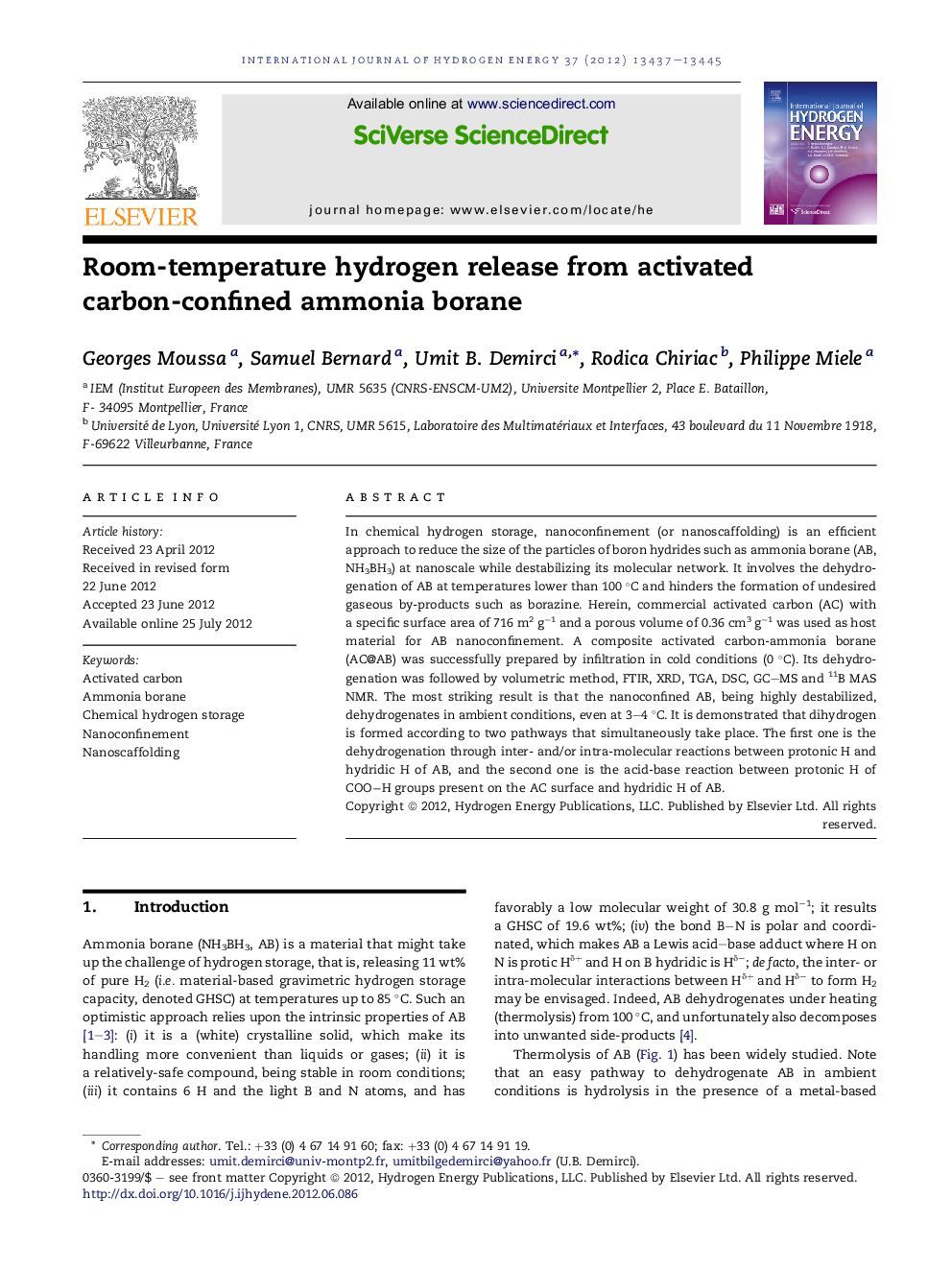| کد مقاله | کد نشریه | سال انتشار | مقاله انگلیسی | نسخه تمام متن |
|---|---|---|---|---|
| 1282239 | 1497551 | 2012 | 9 صفحه PDF | دانلود رایگان |

In chemical hydrogen storage, nanoconfinement (or nanoscaffolding) is an efficient approach to reduce the size of the particles of boron hydrides such as ammonia borane (AB, NH3BH3) at nanoscale while destabilizing its molecular network. It involves the dehydrogenation of AB at temperatures lower than 100 °C and hinders the formation of undesired gaseous by-products such as borazine. Herein, commercial activated carbon (AC) with a specific surface area of 716 m2 g−1 and a porous volume of 0.36 cm3 g−1 was used as host material for AB nanoconfinement. A composite activated carbon-ammonia borane (AC@AB) was successfully prepared by infiltration in cold conditions (0 °C). Its dehydrogenation was followed by volumetric method, FTIR, XRD, TGA, DSC, GC–MS and 11B MAS NMR. The most striking result is that the nanoconfined AB, being highly destabilized, dehydrogenates in ambient conditions, even at 3–4 °C. It is demonstrated that dihydrogen is formed according to two pathways that simultaneously take place. The first one is the dehydrogenation through inter- and/or intra-molecular reactions between protonic H and hydridic H of AB, and the second one is the acid-base reaction between protonic H of COO−H groups present on the AC surface and hydridic H of AB.
► Activated carbon (AC) is used as host material to nanoconfine ammonia borane (AB).
► The composite AC@AB dehydrogenates at temperatures as low as 3–4 °C.
► Up to 0.9 equiv. H2 per mole AB evolves over the range 20–100 °C.
► Two dehydrogenation pathways occur, i.e. an acid-base reaction and dehydrocoupling.
► For the 1st path, the formation of the intermediate COO−H···H−BH2NH3 is proposed.
Journal: International Journal of Hydrogen Energy - Volume 37, Issue 18, September 2012, Pages 13437–13445